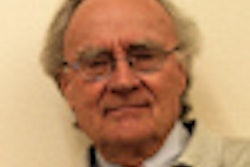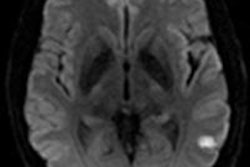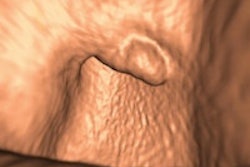Leading Swedish researchers have honored the life of Dr. Torsten Almén, PhD, hailed the father of nonionic contrast media, who died on 8 January.
Born in Ystad, Sweden on 1 September 1931, he started his radiological career in 1959 at the department of radiology in Malmö and remained there his whole career, according to an obituary in European Radiology (May 2016, Vol. 26:5, pp. 1219-1220).
His research began with angiography. In his thesis (1966), he described a new steering instrument for selective angiography and simultaneously investigated the effect of iodine contrast media on patients. In his clinical work, his empathy for patients led him to ask: "Why do patients experience pain during angiography?" which started a career as scientist, inventor, and entrepreneur, the obituary stated.
When performing a very painful lingual arteriography one day, he realized every time he injected physiological saline, the patient experienced no pain. He remembered when he was swimming in the salty water of the west coast of Sweden as a child his eyes burned, but they did not in the brackish water of the Baltic Sea outside his hometown of Ystad. He concluded it was the hypertonicity of the contrast media salt solutions that caused pain. He also assumed the high osmolality of the iodine contrast media was responsible not only for pain, but also for several other side effects of contrast media. After reading some chemistry books, he designed chemical formulas of low- and iso-osmolar contrast media (1968).
He unsuccessfully approached several national and international pharmaceutical companies asking if they were interested in trying to develop the new type of contrast media. One small company in Norway, Nyegaard & Co., took the chance and later grew into Norway's second largest company, Nycomed.
Almén was appointed professor of diagnostic radiology at Lund University in 1986, and he was awarded the Nordic research prize the Fernström Reward in 1987. In 1989, he was elected a member of the Royal Swedish Academy of Science, wich presents the Nobel Prize in Chemistry and Physics, and in 1995 he had a research center in Pennsylvania named after him, the Torsten Almén Research Center.
In 1989, he received the Antoine Beclere award from the French president.
Almén developed other inventions and patents on bone cement, batteries, and nebulizers. He introduced calculation of glomerular filtration rate by measurement of plasma clearance of iohexol, which has now become a standard method in many countries. He was also involved in the development of MRI contrast media, especially based on the Oberhausen effect, according to the obituary.
He is survived by his wife Karin and his two sons from a previous marriage, Per and Pål.



















